
Art in Alternative Spaces

Art in Alternative Spaces
presents
The art exhibit uses the life cycle and path of the Monarch butterfly as a metaphor for transformation and immigration.
For more information or to purchase artwork, please contact:
Anatomically Correct Arts at
Efecto Mariposa, Butterfly Effect
In Celebration of Hispanic and Latino Heritage Month
Artworks by Martha Alvarado, Montserrat Alsina, Rene Arceo, Dana Bloede
Alex Velazquez Brightbill, Paulo Carvalho, Roberto Ferreyra,
Lorenzo, and Juan Roman
on Exhibition September 1 - September 30, 2023
Free Artists Reception: Saturday, Sept. 9 (2 - 4 pm)
with live traditional Folkloric music by Irekani Ferreyra, Son Monarcas
at Devonshire Cultural Center
4400 Greenwood Ave, Skokie, IL 60076
The building is handicap accessible. Admission to the exhibition is FREE.
Gallery Viewing Hours are:
Mon - Thurs: 9 a.m. – 7 p.m.
Fri, Sa, Su: 9 a.m. – 5 p.m.
Closed Holidays
Irekani Ferreyra plays traditional folkloric harp and Roberto Ferreyra plays Spanish guitar
Their band is called
Son Monarcas.
|
Originally from Mexico, Martha now lives in Chicago. She uses oil paint and a variety of mediums such as inks (alcohol and acrylic) pastels, and watercolors to create artwork on paper and canvas. Her art is a celebration of color, cultural iconography, and the juxtaposition of nature and symbolism. Martha studied plastic arts at Escuela de Bellas Artes, Toluca Mexico. She is a long-term member of the International Art Group and Administrator of MADFIG GROUP. Her work has been exhibited at Dank House in Chicago and at the Chicago Public Library (Irving Park location).
|
|
|
|
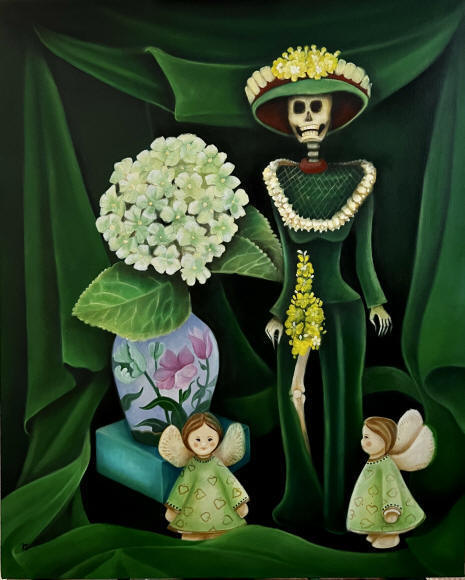 |
|
Dania, Oil on Canvas, 30 x 40" $4,500 © Martha Alvarado |
La Catrina, Oil on Canvas, 26
x 30" $3,500 © Martha Alvarado
|
|
Montserrat Alsina was born and raised in Valencia, Venezuela and currently lives between Chicago and the Dominican Republic. She is a multidisciplinary artist that specializes in drawing, painting, printmaking, photography, and performance. She earned her BA in Art and Education at Rhodes College, and an MFA in Performance Arts at the School of the Art Institute of Chicago. Her art has been exhibited in the USA, Canada, Mexico and the Dominican Republic. Montserrat currently has her studio at MANA Contemporary in Chicago. She has received numerous grants from the Illinois Arts Council, DCASE, and North Shore Country Day School. She is passionate about education, traveling, and creating collaborations in her communities. She is co-founder of Nahui Ollin: Danzas Ceremoniales de México, 18th Street Pilsen Open Studios, Colibrí Studio Gallery, and serves on the Arts and Culture Committee in the Pilsen neighborhood in Chicago.
|
||
|
|
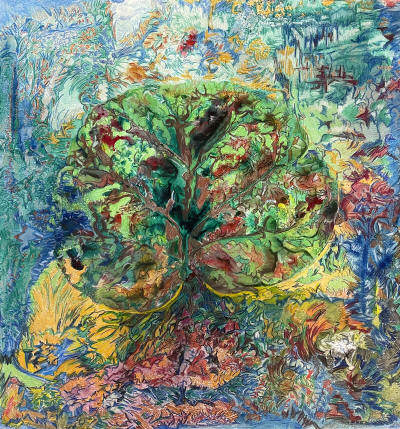 |
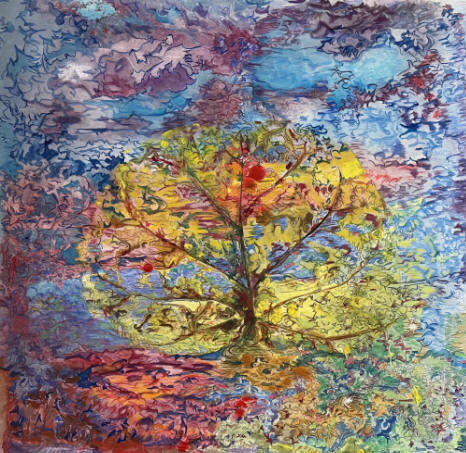 |
|
Water Tree, Mixed Media, 16” x 17” $975 © Monserrat Alsino |
Joy - Flores y Cantos, Mixed Media, 6” x 7” $575 © Monserrat Alsino |
Bliss Creek, El Riachuelo de la Felicidad Mixed Media, 18” x 18” $975 © Monserrat Alsino
|
|
Rene Arceo is a Printmaker and cultural worker who worked for the National Museum of Mexican Art in Chicago and later spent twenty years working for Chicago Board of Education managing their art collection and later teaching art at a K – 8th grade. He co-founded Galeria Ink Works (1984-87) and the Mexican Printmaking Workshop (1990-96), and founded Arceo Press in 2005 to build bridges and to foster international collaborations among printmakers living in different countries. Arceo Press has published fourteen limited edition print portfolios with artists from the United States, Mexico, Spain, Canada, France, Nicaragua, Costa Rica, and Puerto Rico. He has exhibited in group and solo exhibitions in Poland, Mexico, France, Spain, Nicaragua, Puerto Rico, Italy, Canada, Argentina, and the United States. Several grants allowed him to travel abroad to exhibit and lecture in Guadalajara, Mexico (1990), Lublin, Poland (2002), Paris, France (2006), an art residency in Lucerne, Switzerland (2018) and a DECASE grant to publish a recent art book (2021).
|
||
|
|
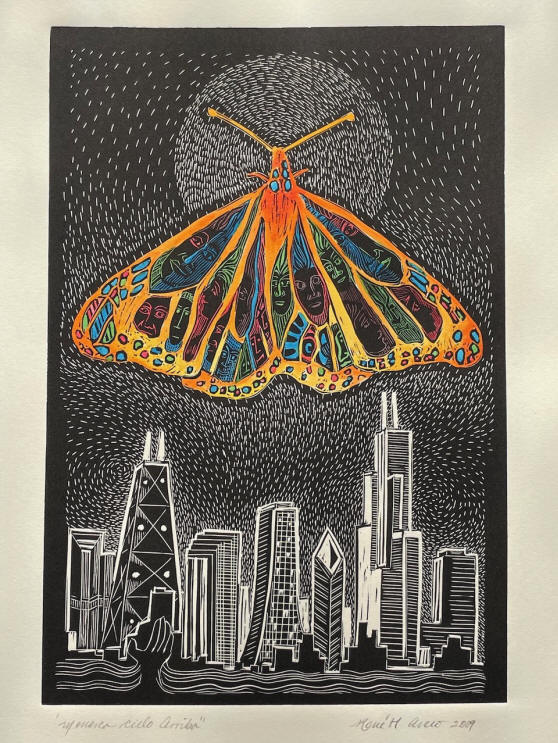 |
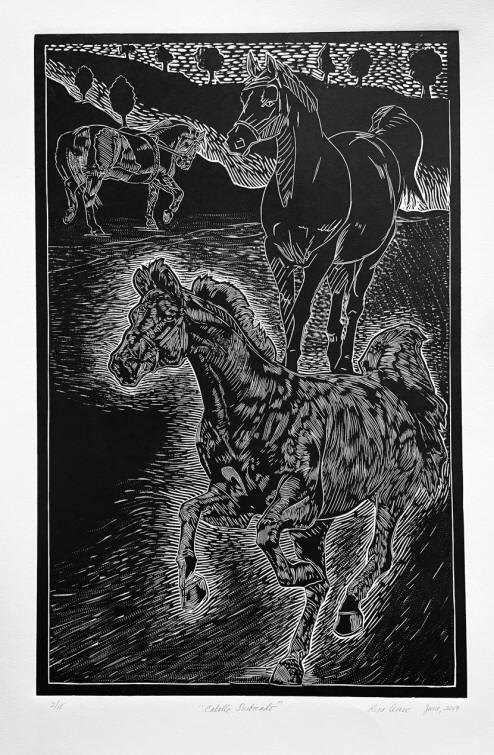 |
|
Self Portrait, Linocut, 39 x
27" $ 550 © Rene Arceo |
Monarcha Cielo Arriba - Chicago (Monarch in
the Sky), Linocut and Watercolor, 21 x 17" $ 350 © Rene Arceo
|
Caballo Desbocado (Runaway Horse),
Linocut, 31 x 21" $ 400 © Rene Arceo
|
|
r |
||
,%202014%20copy.jpeg) |
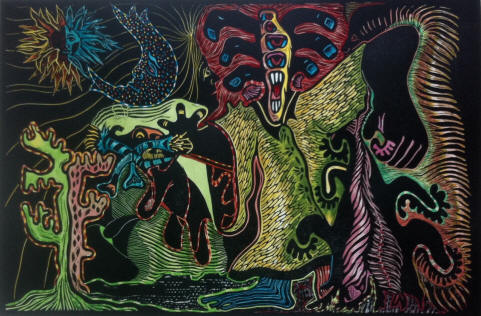 |
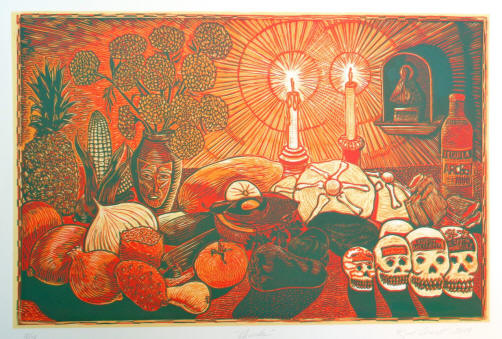 |
|
Tentacion (Temptation),
Collage, 21 x 26" $ 500 © Rene Arceo
|
Magician, Linocut and
Watercolor, 23 x 31" $ 700 © Rene Arceo
|
Ofrenda (Offering), Linocut
Reduction, 28 x 41" $ 600 © Rene Arceo
|
|
|
|
|
|
Sol (Sun), Linocut and Color
Pencil, 31 x 25" $ 450 © Rene Arceo
|
Monarca migrante (Migrant Monarch),
Linocut and Watercolor, 30 x 22" $ 700 © Rene Arceo
|
Monarca (Monarch),
Linocut and Watercolor, 10 x 12" $ 150 © Rene Arceo
|
|
Dana Bloede My mixed media portraits draw from my Native American and Mexican ancestry. Captivated by forests, most of my paintings have a serene narrative with a soulful message. Each painting tells an untold story about women in a way that words cannot. You may see yourself in my paintings. They are meant to evoke feelings of peacefulness & strength. All my paintings are mixed media, acrylic paint, thick with texture and vibrant with color. My paintings are intentionally aged and distressed to obtain an old world charm.
|
|
|
|
Story Teller, Mixed Media on Canvas, 24 x 24" $ 625 © Dana Bloede
|
|
Alex Velazquez Brightbill is a Mexican artist who immigrated to Chicago at the age of ten. She earned a BFA from the Northeastern Illinois University and has shown at numerous galleries and curated art shows and cultural events. Her artwork embodies the hybridity of growing up with two cultural experiences, her love of animals and nature.
|
||
|
|
|
|
|
Somos Esenciales, Linocut, 18
x 22" $ 180 © Alex Velazquez Brightbill |
Salva Las Abejas (Save the
Bees), Linocut & Chine-Collé 14 x 18" $ 125 © Alex Velazquez Brightbill
|
Darwin Carnivora, Linocut, 15
x 19" $ 250 © Alex Velazquez Brightbill
|
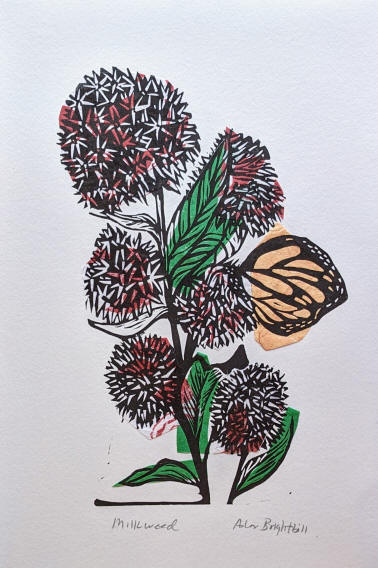 |
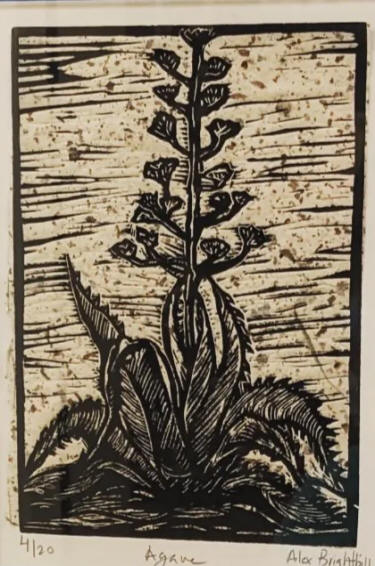 |
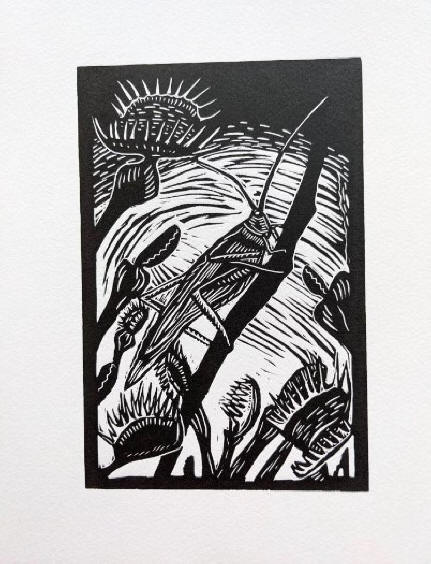 |
|
Milkweed,
Linocut & Chine-Collé,
12 x 15" $ 125 © Alex Velazquez Brightbill
|
Agave,
Linocut & Chine-Collé,
12 x 15" $ 135 © Alex Velazquez Brightbill
|
Venus Fly Trap,
Linocut,
9 x 11" $ 95 © Alex Velazquez Brightbill
|
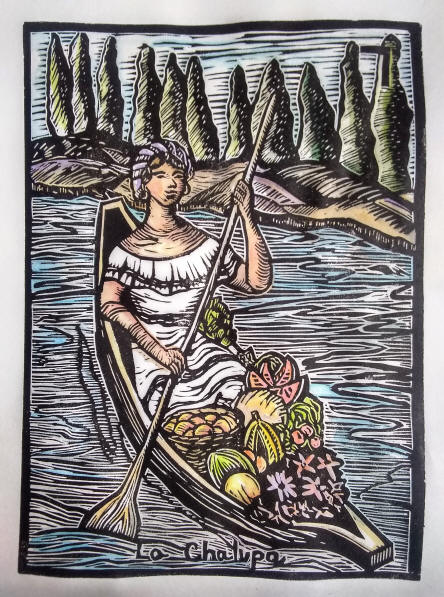 |
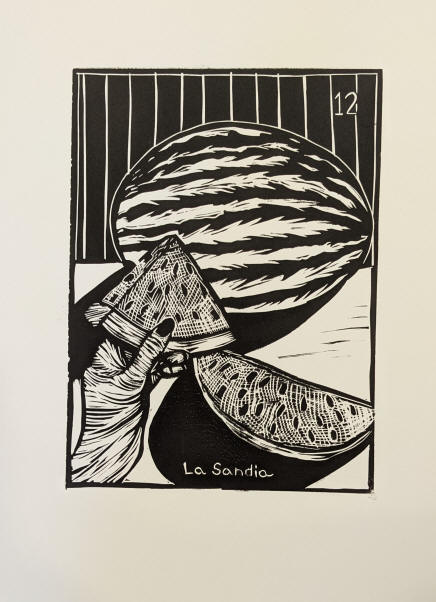 |
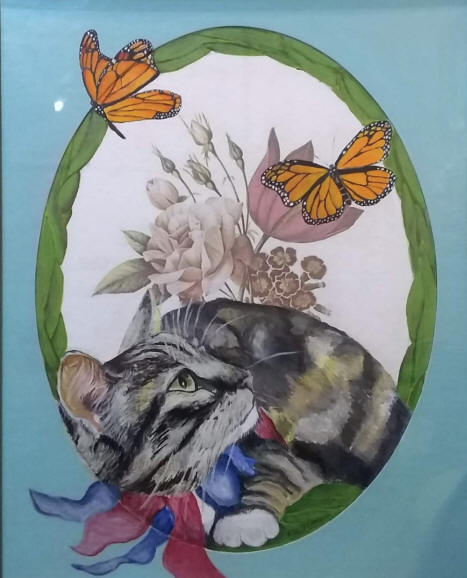 |
|
La Chalupa,
Linocut & Watercolor,
13 x 17" $ 150 © Alex Velazquez Brightbill
|
La Sandia,
Linocut,
13 x 15" $ 120 © Alex Velazquez Brightbill
|
Winnifer,
Acrylic on Board,
16 x 20" $ 200 © Alex Velazquez Brightbill
|
|
Paulo Carvalho Paulo was born in Brazil and now lives in Chicago. His goal as a painter is to capture nature's beauty, grandeur and power on the canvas in the academic traditions and craftsmanship utilized by the great masters of the past. His paintings are the result of direct observation of nature (plein air), but some of his recent works are larger studio paintings done from smaller field studies. Several years ago, he began art classes at the Chicago Botanic Garden; as well as the New York Botanical Garden, where he attended botanical drawing and botanical watercolor classes. After experimenting with watercolor, he decided to try oil painting and attended several still life classes with the great painter Diane Rath. After the passing of Mrs. Rath, he attended several still life painting classes with Michael Van Zeyl at the Palette and Chisel Academy and David Jamieson at the Vitruvian Art Studio. In 2012 and 2013, he traveled to New Hampshire to attend a 10-day plein air workshop offered by New York's Grand Central Atelier landscape instructor Erik Koeppel. Since then, he has been concentrating on plein air/landscape painting. He has also studied with Cape Cod instructor Donald Demers, Mark Boedges in Montana, and Joe Paquet in St. Paul and Madeline Island. Since 2018, he has been studying portrait drawing classes with Don Yang, a professor at the American Academy of Arts; and portrait painting classes with David Grey.
|
||
|
|
|
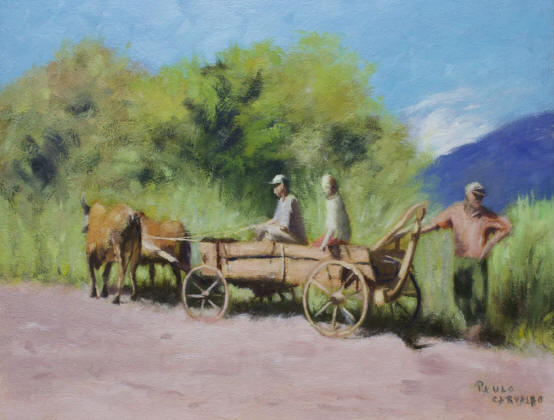 |
|
Rural Landscape with Large Tree Oil on Panel, 12 x 16" $ 600 © Paulo Carvalho |
At Chapada Diamantina Oil on Panel, 12 x 16" $ 600 © Paulo Carvalho
|
Short Break Oil on Panel, 12 x 16" $ 600 © Paulo Carvalho
|
|
|
|
|
|
House with Garden Oil on Panel, 12 x 16" $ 600 © Paulo Carvalho
|
Living Room Oil on Panel, 12 x 16" $ 600 © Paulo Carvalho |
Sunny Backyard Oil on Panel, 12 x 16" $ 600 © Paulo Carvalho
|
|
Roberto Ferreyra is from Morelia, Michoacan State, Mexico. He is a painter and musician who actively works to contribute his artistic talents to the Chicago community. He is a co-founder of Colibri Gallery in Pilsen. Ferreyra has been an active artist and educator in Mexico, as well as in Chicago working with different organizations implementing art in the schools. He spends his time between Mexico and USA working in several printmaking workshops as well as at his own studios in Mexico and Chicago. He graduated from the National School of Painting, Sculpture, and Printmaking “La Esmeralda”. He was initially drawn to the plastic arts from the works of the great Mexican muralists Rivera, Siqueiros, and Orozco. His inspiration draws strongly on the pre-Colombian culture and images. Roberto’s works have been shown in Spain, Canada (Montreal, Toronto), the United States (New York, Chicago) as well as in his own country. His works have also appeared in many art magazines from Mexico and other countries. Ferreyra is not only a well-known painter but is also an acclaimed poet, winner of the 1985 2nd Bienal de Poesia Breve, Valparaiso, Chile, and 1986 “Antologia de Poesia Joven Latinoamericana”, Revista Mairena, Puerto Rico.
|
||
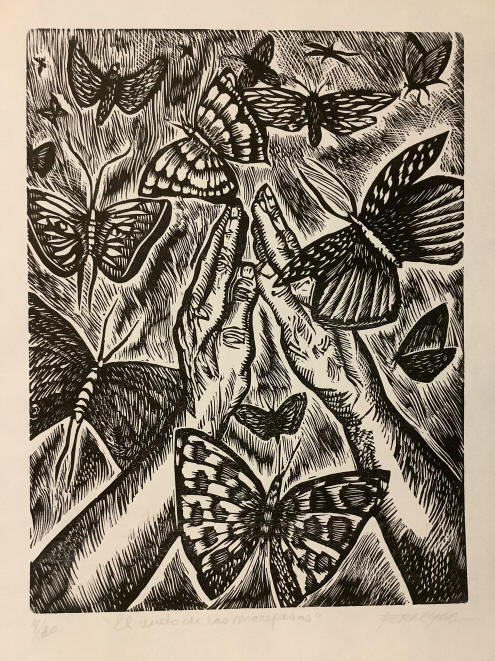 |
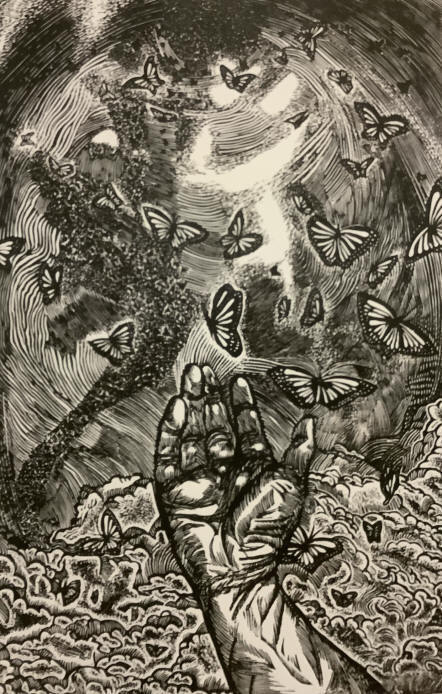 |
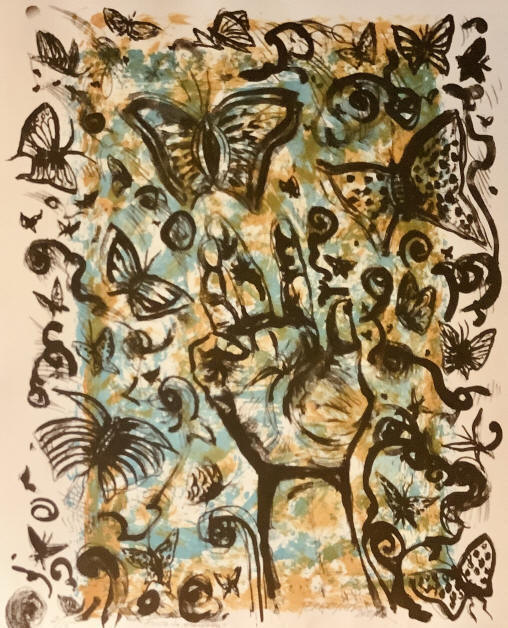 |
|
El Vuelo de Las Mariposas Linocut-Paper, 19.5 x 18" $ 250 © Roberto Ferreyra
|
Remolino de mariposas,
Linocut-Paper,
19.5 x 18" $ 400 © Roberto Ferreyra
|
Fiesta de Mariposas,
Lithograph, 19.5 x 18" $ 475 © Roberto Ferreyra
|
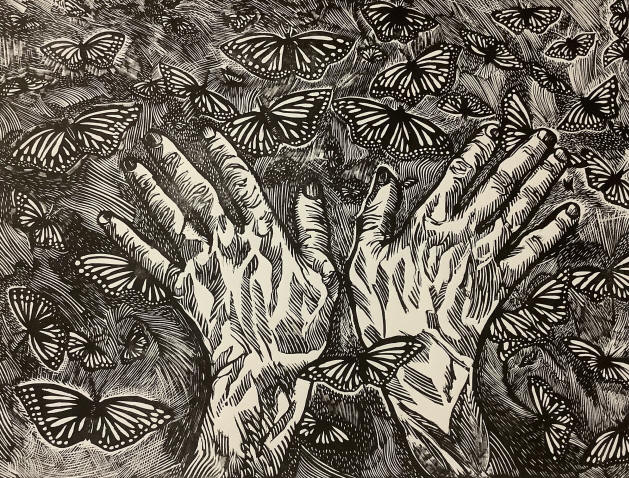 |
||
|
Vuela
conmigo (Fly with Me),
Linocut-Paper, 19.5 x 18" $ 385 © Roberto Ferreyra |
||
|
As a Hispanic artist who has left footprints in New York, Los Angeles and now back home in Chicago, my work has grown to reflect the struggles and happiness of my experiences. Primarily self-taught, painting from a young age was my soul seeking destination. My urban environment has always lived within my art. A world of many colors and curves, bringing together an unbridled energy. The greatest artists of my time have stylistically always been a part of my inspiration.
|
||
|
|
|
|
|
Viva, Acrylic on Canvas, 24 x
48" $ 1,600 © Lorenzo
|
La Raza, Acrylic on Canvas, 24
x 48" $ 1,400 © Lorenzo
|
Bull, Acrylic on Skull, 16.5 x
21" $ 500 © Lorenzo
|
|
|
|
 |
|
Breathe, Acrylic on Canvas, 16
x 20" $ 350 © Lorenzo
|
Take a Moment, Acrylic on
Canvas, 16 x 20" $ 275 © Lorenzo
|
Machine, Acrylic on Canvas, 22
x 28" $ 1,600 © Lorenzo
|
|
Juan was born in Puerto Rico and raised in Chicago. A graduate of Northwestern University, he strives to preserve his Puerto Rican culture and advance it for succeeding generations. Juan creates traditional and contemporary style Puerto Rican "Vejigante" carnival masks using paper mache, acrylic paint, wires and a variety of other mediums. His masks are in the collection of the Museum of Anthropology at the University of British Columbia in Vancouver, Canada, as well as, in the local Chicago museums of the National Museum of Puerto Rican Arts and Culture and The Puerto Rican Arts Alliance. In addition to his mask-making, Juan is a photographer. Juan strongly believes that the arts are important and a way to preserve various cultural and artistic traditions.
|
|
Extruded Taino Petroglyph Vejigante Mask Paper Mache Wire & Acrylic 21 x 22 x 12" $ 600 © Juan Roman |
|
MORE ABOUT THE TRADITIONAL MASK: At first encounter with Europeans in 1493, on Columbus’ 2nd voyage to the “New World”, the Taino civilization inhabited Boriken, known today at the island of Puerto Rico. As with the many other indigenous peoples of these hemispheres, they had artists that expressed their beliefs in various artworks. What survived were decorative motifs on pottery and petroglyphs carved into the volcanic rock that made possible the lands of Greater and Lesser Antilles in the Caribbean. Taino peoples were a peaceful, mainly agricultural society. This particular Vejigante mask is a manifestation of a certain Taino petroglyph, imagined as extruded into a Vejigante mask. The horns, which are typical components of a Vejigante mask, when viewed from certain angles, forms a heart, and the corona on the top has a double meaning, One being the representation the Taino sun god, Yucahu.
Ancient Taino Petroglyph Petroglyphs are rock carvings (rock paintings are called pictographs) made by pecking directly on the rock surface using a stone chisel and a hammerstone. When the desert varnish (or patina) on the surface of the rock was chipped off, the lighter rock underneath was exposed, creating the petroglyph.
|
MONARCHA
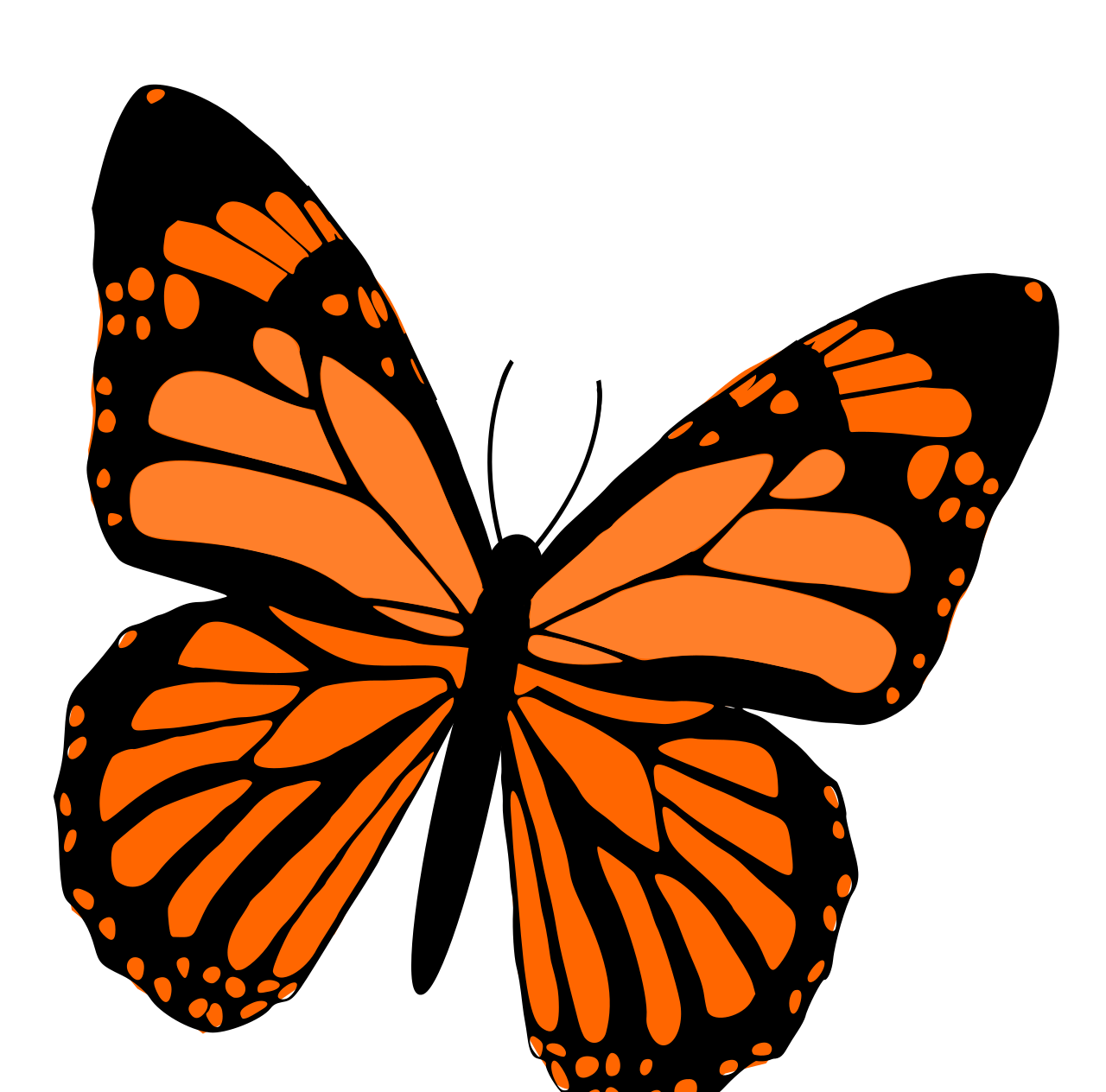 Monarch
butterflies live in North, Central, and South America as well as Australia,
some Pacific Islands, India, and Western Europe. Their markings include
bright orange wings covered with black veins and rimmed with a black border
and white dots. Females have thicker veins in their wings. A monarch's
brilliant coloring tells predators: "Don't eat me. I'm poisonous." The
butterflies get their toxins from a plant called milkweed, which is their
only food source in the caterpillar stage. An animal that eats a monarch
butterfly usually doesn't die, but it feels sick enough to avoid monarchs in
the future.
Monarch
butterflies live in North, Central, and South America as well as Australia,
some Pacific Islands, India, and Western Europe. Their markings include
bright orange wings covered with black veins and rimmed with a black border
and white dots. Females have thicker veins in their wings. A monarch's
brilliant coloring tells predators: "Don't eat me. I'm poisonous." The
butterflies get their toxins from a plant called milkweed, which is their
only food source in the caterpillar stage. An animal that eats a monarch
butterfly usually doesn't die, but it feels sick enough to avoid monarchs in
the future.
The most amazing thing about monarch butterflies is the enormous migration that North American monarchs undertake each year. Every fall, as cold weather approaches, millions of these delicate insects leave their home range in Canada and the United States and begin flying south. They continue until they reach Southern California or central Mexico, nearly 2,500 miles away!
These international travelers return to the same forests each year, and some even find the same tree that their ancestors landed on. Some estimates say up to a billion butterflies arrive in the mountains of Mexico each year.
Scientists aren't sure how migrating monarchs know which way to go, since they only live a few months and none makes the journey more than once. Toward the end of winter, the monarchs in Mexico and California mate. The males then die, while the females head north, depositing eggs on milkweed plants along the way and eventually dying themselves. From these tiny, round eggs come small green-and-white-striped caterpillars, which feed on the milkweed leaves. For about two weeks, they eat constantly and grow by shedding their skin. They are then ready to transform into pupae. To become a pupa, also called a chrysalis, a monarch larva attaches itself with silk to a leaf or branch, sheds its skin, and forms a hard shell. This vase-shaped case starts out green with shiny golden dots and slowly becomes white, then see-through. After 9 to 15 days, a fully formed butterfly emerges.
The entire egg-to-butterfly process, called metamorphosis, takes about a month. Once out of the pupa, the damp butterfly inflates its wings with blood stored in its abdomen. It must wait for its wings to dry before it flies away. Adult butterflies don't grow. They survive by drinking nectar from flowers, including milkweed, clover, and goldenrod.
Scientists think North American monarchs have been making their amazing annual journey for thousands of years. But threats to their habitat and food source are making the migration more difficult, and monarchs are now on the endangered species list.
Habitat destruction over decades in areas where they spend the winter has taken a massive toll. The impact is felt by both the western population, which is found west of the Rocky Mountains and winters on the California coast, and the eastern population, which is found in the eastern United States and Canada and winters in Mexico’s fir tree forests.
In their summer habitats, pesticides used in farming have killed monarchs as well as milkweed, the plant they eat and lay their eggs in. Climate change, too, is an increasing threat as dramatic weather events such as hurricanes and drought become more common along the butterflies’ southern migration routes.
Now that the monarch has been added to the endangered species list, conservationists hope that more people will understand how much danger these butterflies are in and that organizations will step up to show folks how to help protect this amazing insect.
For instance, conservationists encourage people to plant milkweed in their yards so monarch butterflies can lay their eggs and their caterpillars have food to eat. Volunteer opportunities include citizen science, in which regular people help scientists collect critical data that will be used to develop conservation policies to protect monarchs.
Courtesy of National Geographic Kids
https://kids.nationalgeographic.com/animals/invertebrates/facts/monarch-butterfly
© 2022 -2023 Anatomically Correct. No text or photograph contained in the pages of this website may be reproduced without the expressed written permission of the artist and/or Anatomically Correct.
Founded in 1991, Anatomically Correct is a not-for-profit organization dedicated to showcasing works by artists in alternative spaces in a combined effort to educate, diversify, and promote community awareness of the visual and performing arts.
This project is sponsored in part by the Illinois Arts Council, a state
agency and the Skokie Park District.
For more information or to purchase artwork, please
contact:
Anatomically Correct Arts at